From 'Rudolph' to 'Frosty,' these 5 classic Christmas songs have surprising Oklahoma ties
- Oops!Something went wrong.Please try again later.
- Oops!Something went wrong.Please try again later.
- Oops!Something went wrong.Please try again later.
From red-nosed reindeer to parading snowmen and even wish-list hippopotamuses, many of the most popular Christmas songs of all time come gift-wrapped with plenty of childlike wonder and holiday nostalgia.
Many also come wrapped up in unexpected Oklahoma ties, from homegrown recording artists to Sooner State songwriters.
Here are five classic Christmas songs with Oklahoma connections that might surprise you:
‘Here Comes Santa Claus (Right Down Santa Claus Lane),’ co-written and recorded by Gene Autry
In his day, Gene Autry was famed as the “Singing Cowboy,” but the actor, singer and rodeo performer also could be considered the “Christmas Cowboy” for all the enduring holiday hits he rounded up.
Born Orvon Gene Autry on Sept. 29, 1907, on a small tenant farm near Tioga, Texas, he was just a baby when his family moved to southern Oklahoma, where he grew up near Achille and Ravia.
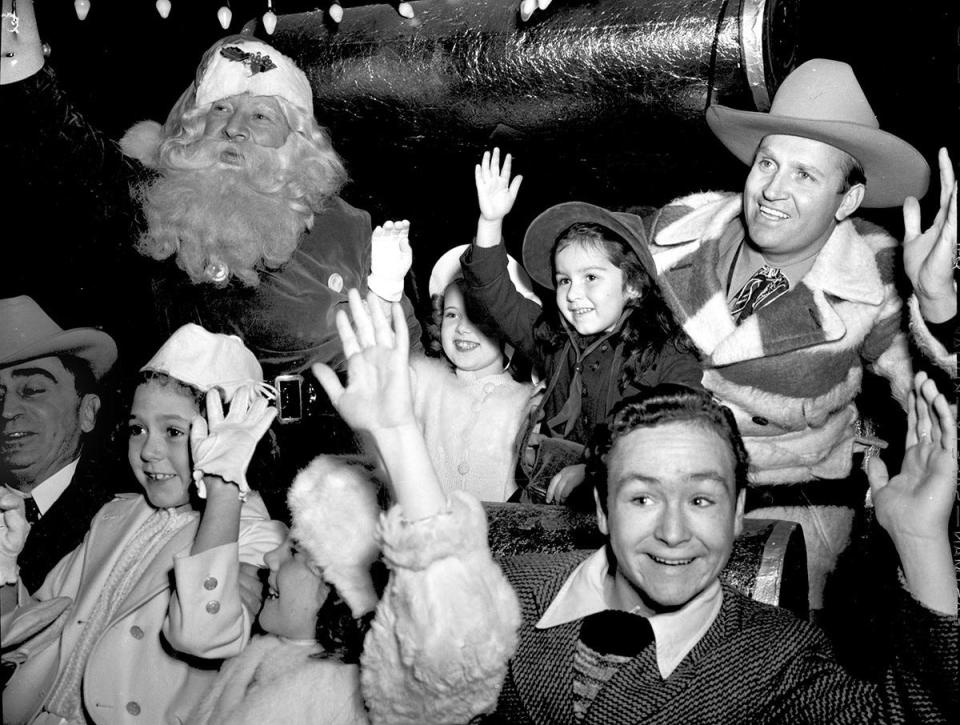
Legend has it that Autry was singing and playing his guitar while filling in for a telegrapher in Chelsea when “Oklahoma’s favorite son” Will Rogers came into the office to dispatch his daily syndicated column. Impressed with Autry's talents, Rogers encouraged him to keep singing, so Autry headed to New York in 1927 to "make a record."
He soon returned to the Sooner State as "Oklahoma's Yodeling Cowboy" on Tulsa’s KVOO radio and found fame in the fledgling Hollywood movie industry and later in the early television biz.
The cowboy star first became tied to Christmas in 1947, when he wrote, recorded and released on Columbia Records “Here Comes Santa Claus (Right Down Santa Claus Lane).” As the song’s intro chronicles, Autry was inspired to pen the lyrics after riding his horse Champion Jr. in the 1946 Santa Claus Lane Parade (later called the Hollywood Christmas Parade) in Los Angeles.
With music composed by Oakley Haldeman, the yuletide ditty, featuring Autry’s folksy drawl of “Santa Claus” as “Santy Claus,” became a big country and pop hit for the Singing Cowboy.
“Here Comes Santa Claus” has been covered by an array of recording artists, including Doris Day, Bing Crosby, Elvis Presley, Bob Dylan and Pentatonix, but none have overtaken the Oklahoma cowboy's original rendition. It was an Autry version that was featured in the 1989 comedy “National Lampoon's Christmas Vacation.”
Autry went on to cut the St. Nick standards “Santa Claus Is Comin' to Town,” “Up on the Housetop (Ho Ho Ho)” and “The Night Before Christmas Song,” recording the latter as a duet with “White Christmas” movie star Rosemary Clooney.
But those weren’t the only seasonal smashes that have helped Autry become the reigning cowboy champion of Christmas.
‘I Want a Hippopotamus for Christmas,’ recorded by Gayla Peevey
An Oklahoma City native, Gayla Peevey was just 10 years old when she recorded the cheery 1953 ditty "I Want a Hippopotamus For Christmas" for Columbia Records. The novelty song was a hit on the Billboard charts — it's listed at No. 59 on Billboard's "Greatest of All Time: Holiday 100 Songs" — and Peevey performed it on a November 1953 episode of "The Ed Sullivan Show."
Written by John Rox, the Christmas classic has since been covered by the likes of the Three Stooges, Captain Kangaroo, LeAnn Rimes, Gretchen Wilson and Kacey Musgraves. But Peevey's recording remains the definitive version.
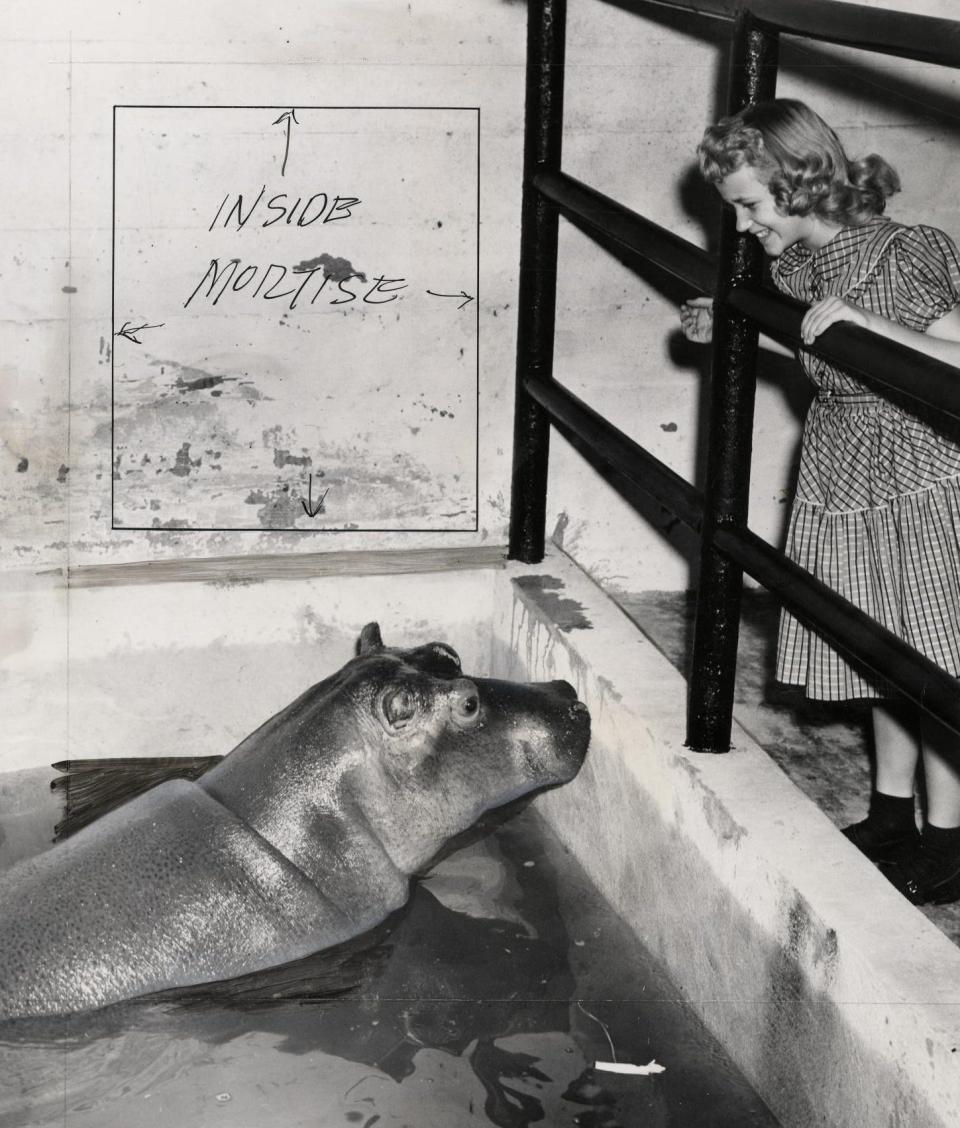
"There weren't that many little kids at that time recording or singing or performing, so even then it was kind of unusual," Peevey told The Oklahoman in a recent phone interview from her longtime home in California. "Big-name artists have recorded it. But by and large, when you hear it at Christmastime, it's the original one."
Perhaps nowhere did Peevey's holiday hit make a bigger impact than in her hometown, where she teamed with the Oklahoma City Zoo (then the Lincoln Park Zoo) and used the catchy tune to raise money to bring the zoo's first Nile hippopotamus, Mathilda, to town on Christmas Eve 1953.
"The whole story about the kids sending in their nickels and dimes, who raised money and bought Mathilda, that's a big, fun thing. It's a big part of my history: The little girl that got a real, live hippo for Christmas — and, of course, donated her to the Oklahoma City Zoo," Peevey said.
In November, Peevey returned to her hometown to celebrate the 70th anniversary of “I Want a Hippopotamus for Christmas” at a special sing-along and meet-and-greet at the OKC Zoo.
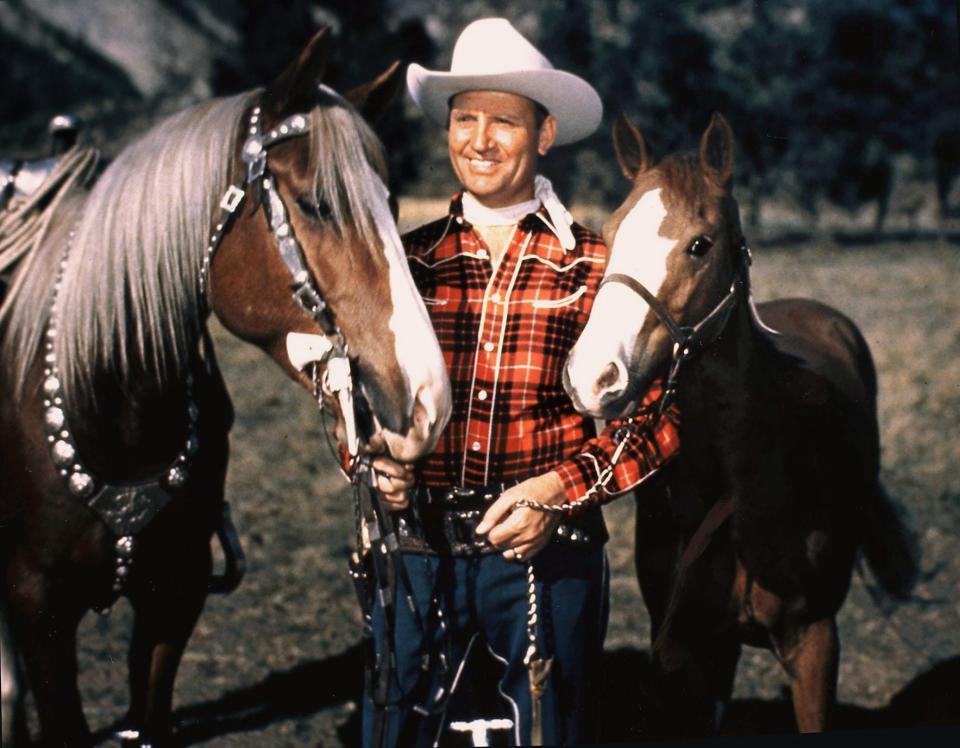
‘Rudolph the Red-Nosed Reindeer,’ recorded by Gene Autry
He may have started his yuletide hit parade on a horse, but Autry cemented his seasonal legacy with the help of a certain red-nosed reindeer.
Taking his cues from Clement Moore’s 1820s poem “A Visit from Saint Nicholas” (now known as "Twas the Night Before Christmas”), Chicago copywriter Robert L. May in 1939 created the character of “Rudolph the Red-Nosed Reindeer” for Montgomery Ward’s annual promotional coloring booklet.
The retailer distributed 2.4 million copies of the booklet that year, and soon after, Johnny Marks, May’s brother-in-law, decided to turn the story into a song.
Already a Christmas hitmaker, Autry wasn’t sure if Rudolph’s story-song suited his style, but his wife, Ina Autry, liked the song and convinced him to croon it. The Singing Cowboy recorded it in 1949, and it raced to the top of the charts. The song inspired a 1964 animated special narrated by Burl Ives, who also covered the tune, but the TV show helped bring attention to Autry’s original version, too.
By the time Autry died in 1998, "Rudolph the Red Nosed Reindeer" had sold 10 million copies and become a perennial holiday favorite.
The tale of “the most famous reindeer of all” is No. 24 on USA Today’s new list of “50 of the best Christmas songs to get you in the holiday spirit” and ranks No. 12 on Billboard's "Greatest of All Time: Holiday 100 Songs"
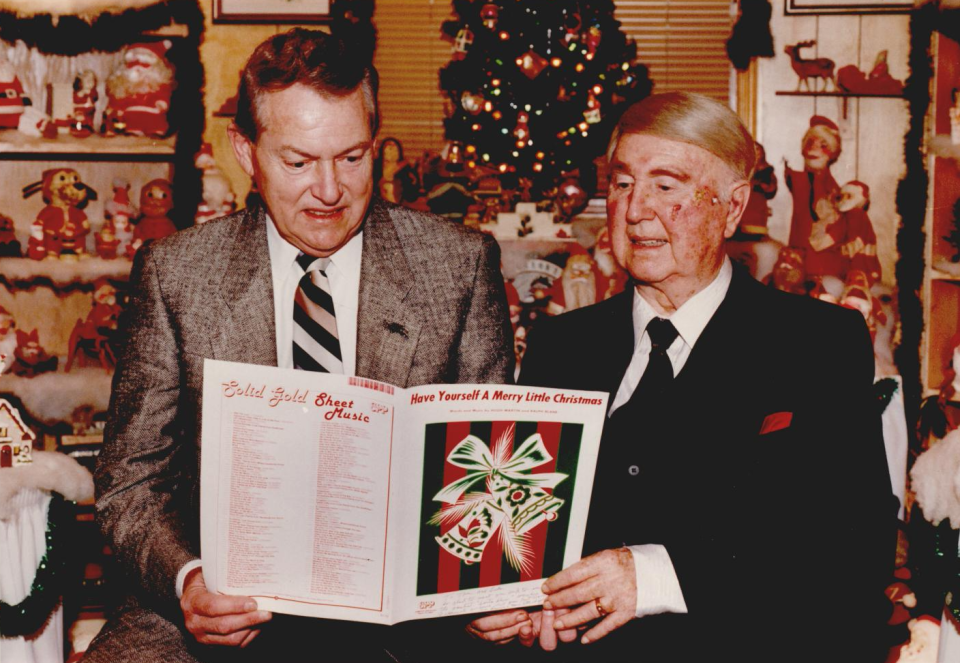
‘Have Yourself a Merry Little Christmas,’ co-written by Hugh Martin and Ralph Blane
The wistful anthem “Have Yourself a Merry Little Christmas” tops USA Today’s 2023 list of the “50 of the best Christmas songs to get you in the holiday spirit.” Warbled by legendary actress and singer Judy Garland, it was written 80 years ago by Broken Arrow native Ralph Blane and his creative partner Hugh Martin.
Along with dozens of other songs for MGM and Broadway musicals, the pair penned “The Trolley Song” and “Have Yourself a Merry Little Christmas” for the 1944 movie musical “Meet Me in St. Louis,” starring Garland and Margaret O’Brien. The Songwriters Hall of Famers, who eventually adapted the film into a stage musical that debuted on Broadway in 1989, earned an Oscar nomination for “The Trolley Song.”
But Blane told The Oklahoman in 1992 that “Have Yourself a Merry Little Christmas” had become “the biggest song of our career.”
“Over a period of years, it's outstripped 'The Trolley Song' to become the most important song in my catalogue. And I'm thrilled for it; it's paid the bills,” said Blane, who died in 1995 in his hometown.
Blane was born Ralph Hunsecker July 26, 1914, in Broken Arrow, and a historical marker designates his boyhood home there at 230 E Dallas Ave.
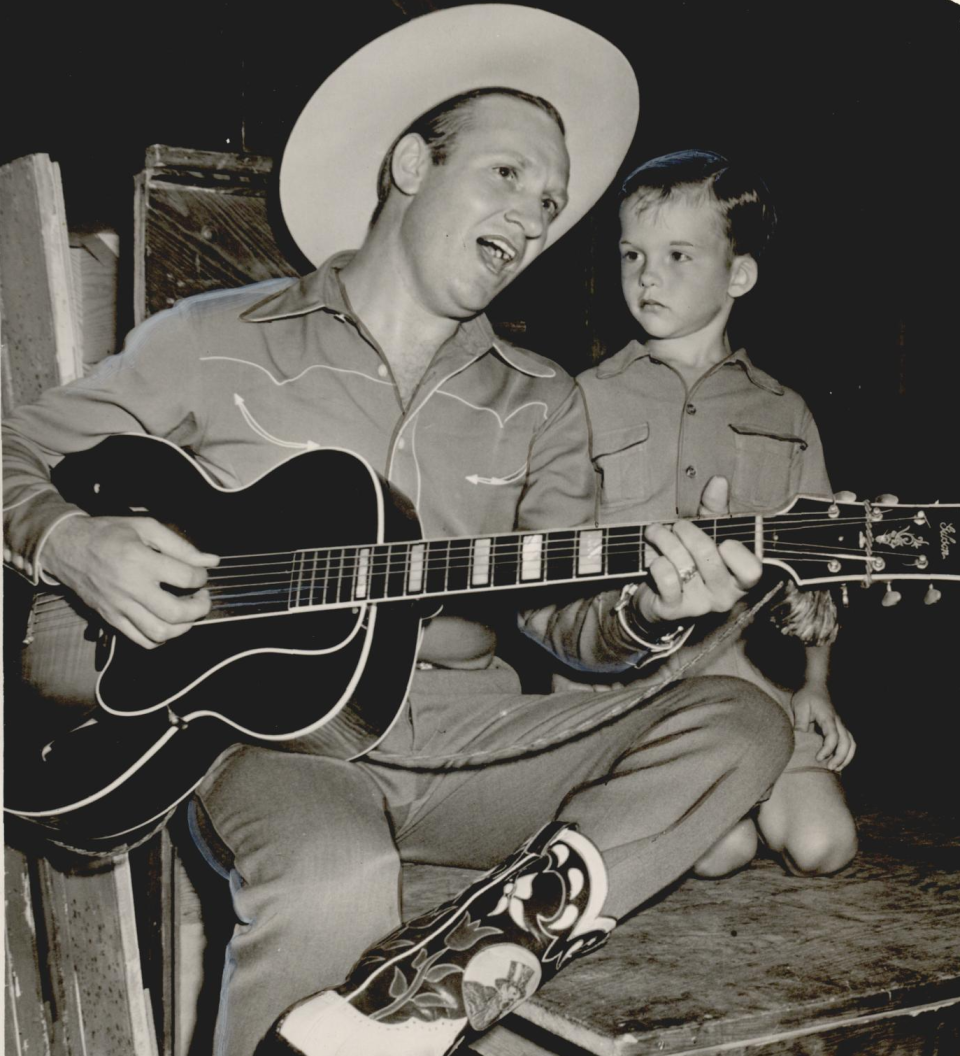
‘Frosty the Snowman,’ first recorded by Gene Autry
Although the Singing Cowboy’s rendition of the story-song about an enchanted snowman likely wouldn’t be considered the definitive version of “Frosty the Snowman,” Autry was the first to record the tale of the “jolly happy soul with a corncob pipe and a button nose.”
With the popularity of Autry’s Christmassy singles “Here Comes Santa Claus” and “Rudolph the Red-Nosed Reindeer,” songwriters Walter Rollins and Steve Nelson pitched their 1949 Easter tune “Here Comes Peter Cottontail” to the Oklahoma star, who turned it into a holiday hit the following spring.
So, when the songwriters penned “Frosty” in 1950, Autry and his band The Cass County Boys were the first to record it later that year. The Christmas Cowboy turned it into yet another yuletide hit: Autry got to “look at Frosty go” to No. 7 on the Billboard Hot 100 and No. 4 on the Hot Country Songs chart, according to American Songwriter.
“Frosty” was quickly covered by Nat King Cole, Guy Lombardo and Jimmy Durante, with the latter showcasing his version and narrating the story in the 1969 animated TV special of the same name.
This article originally appeared on Oklahoman: 5 popular Christmas songs with surprising Oklahoma ties

